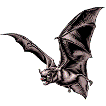Museum, University of Nebraska State

University of Nebraska State Museum: Mammalogy Papers
Document Type
Article
Date of this Version
7-20-1970
Citation
Occasional Papers of the Western Foundation of Vertebrate Zoology (Jul 20, 1970) number 2, 19 pages.
Abstract
Harvest mice of the genus Reithrodontomys first were reported from Nicaragua by Oldfield Thomas (1907), who originally described Reithrodontomys sumichrasti modestus based on a single specimen from Jinotega. J. A. Allen (1908, 1910) recorded additional specimens of R. s. modestus, which still was the only species known from the country when A. H. Howell (1914) revised the genus Reithrodontomys. In his thorough review of Latin American harvest mice, Hooper (1952) added a second species, Reithrodontomys mexicanus lucifrons, to the Nicaraguan fauna, and Englert (1959) and Anderson and Jones (1960) recorded three additional kinds. The present report treats six species, including one that is described as new; one new subspecific name also is proposed.
This paper is an outgrowth of investigations in Nicaragua principally by field parties from the Museum of Natural History at the University of Kansas. The first of these, consisting of J. R. Alcorn and his family, obtained mammals in the winter and spring of 1956 under the aegis of the Kansas University Endowment Association. Their collections are particularly rich in rodent material and include harvest mice reported originally by Englert, and Anderson and Jones. Later, between February of 1964 and the spring of 1968, other field parties from Kansas, supported by a contract (DA-49-193-MD-221 5) from the U.S. Army Medical Research and Development Command, collected mammals and their ectoparasites in Nicaragua and obtained additional specimens. Furthermore, we have been privileged to examine material housed in the American Museum of Natural History (AMNH) and the U.S. National Museum (USNM), bringing to a total of 124 the number of harvest mice available to us for study.
Specimens listed as examined are in the University of Kansas Museum of Natural History unless otherwise noted; because undue crowding of symbols would have resulted, localities set in italics are not plotted on the distribution maps.
Included in
Biodiversity Commons, Population Biology Commons, Terrestrial and Aquatic Ecology Commons, Zoology Commons


Comments
Copyright 1970, Western Foundation of Vertebrate Zoology. Used by permission.